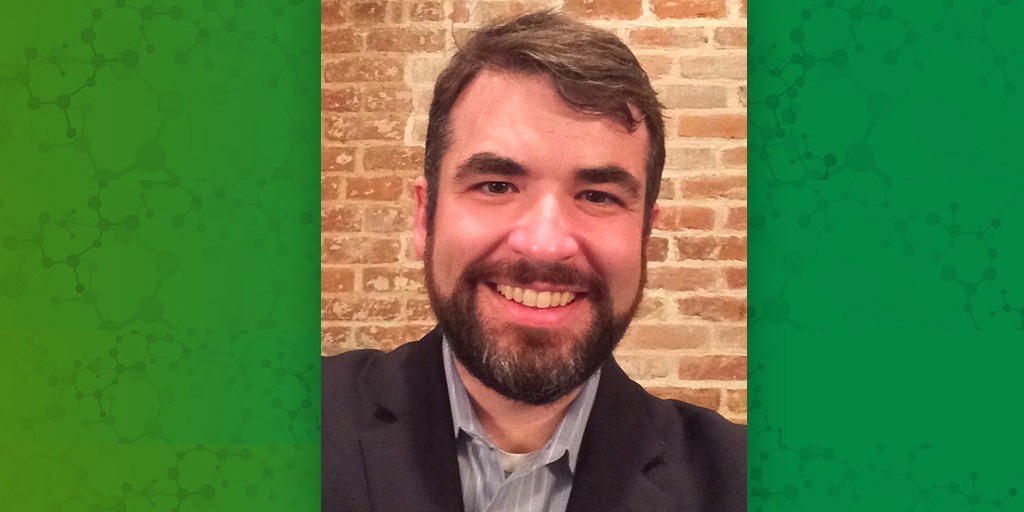The impact of environmental pollutants on human health was the focus of a pair of recent talks by scientists with ties to NIEHS. Their work was presented as part of Duke University’s Integrated Toxicology and Environmental Health Program spring seminar series.
In his Feb. 10 lecture, Robert Tighe, M.D., an NIEHS grantee and Duke pulmonologist, described how air pollution can trigger respiratory symptoms and worsen chronic lung diseases. On Feb. 17, Sam Hall, a former NIEHS postbaccalaureate fellow and current Duke Ph.D. candidate, discussed North Carolina communities’ exposure to per- and polyfluoroalkyl substances (PFAS), specifically near the Haw River and the town of Pittsboro.
Both speakers emphasized the need to develop innovative solutions to protect vulnerable populations from the harmful substances found in their air, food, and water.
“Regulation is certainly an important tool,” said Tighe. “But regulation on its own isn’t going to be sufficient to handle these problems, particularly in individuals who are more susceptible to the adverse effects.”
Something in the air
According to Tighe, we breathe about 23,000 liters of air a day. If that air is filled with contaminants and pollutants, it can have serious consequences on our health. These include premature death, heart disease, developmental damage, reproductive harm, and lung cancer. Tighe’s laboratory focuses on ozone, an urban air pollutant that results from chemical reactions between sunlight and products of combustion such as the burning of fossil fuels.
Tighe explained how he has tapped into more than 15 years of carefully controlled human ozone exposure studies at Duke. In the studies, healthy volunteers breathe either regular air or air containing 200 parts per billion of ozone and then have their airways sampled to see what changes were triggered by the ozone exposure. Tighe discovered that a set of pro-inflammatory proteins — called CXCL9, CXCL10, and CXCL11 — were turned on in lung cells obtained after human ozone exposure.
When he followed up the studies in animal models, he found that mice lacking a protein called the CXCR3 receptor — which acts like a lock to the other proteins’ key — were resistant to the earliest stages of ozone-induced lung injury. With a grant from NIEHS, Tighe is now investigating whether people with certain variants of CXCR3 are more or less susceptible to ozone.
Forever chemicals
 Hall worked to create a website for Pittsboro residents affected by high PFAS levels. “It has become an invaluable resource, all thanks to Sam’s hard work, leadership, and great organizational skills,” said her dissertation advisor, Duke researcher Heather Stapleton, Ph.D.. (Photo courtesy of Sam Hall)
Hall worked to create a website for Pittsboro residents affected by high PFAS levels. “It has become an invaluable resource, all thanks to Sam’s hard work, leadership, and great organizational skills,” said her dissertation advisor, Duke researcher Heather Stapleton, Ph.D.. (Photo courtesy of Sam Hall)PFAS are widespread environmental contaminants. They can be found in dust, consumer products, and drinking water, as well as in most of our bodies, Hall explained. More than 95% of people in the U.S. have some amount of PFAS in their blood. Part of Hall’s dissertation research has focused on the Haw River and the drinking water of Pittsboro, which are both contaminated with PFAS. Hall found that Pittsboro residents had two to four times higher levels of PFAS in their blood than the rest of the U.S. population.
Specifically, people who had lived in their home for seven years or longer had the highest levels of PFAS, suggesting that even though levels in drinking water are low now, historical exposure to higher levels in the past could contribute to these results. Hall and her colleagues have analyzed associations between these elevated PFAS levels and 18 different health measures. They plan to share their findings with research participants in the coming months.
Hall said that there are many things we can do to address PFAS contamination. On the individual level, people can install water filters and try to avoid products that contain PFAS. On the societal level, she suggested looking to history for solutions.
“This is certainly not the first persistent halogenated group of compounds to contaminate our environment,” Hall said.
She pointed to substances such as polychlorinated biphenyls, production of which was banned in the U.S. in 1979, and dioxins, which now are regulated through environmental laws.
(Marla Broadfoot, Ph.D., is a contract writer for the NIEHS Office of Communications and Public Liaison.)
Source link
factor.niehs.nih.gov


